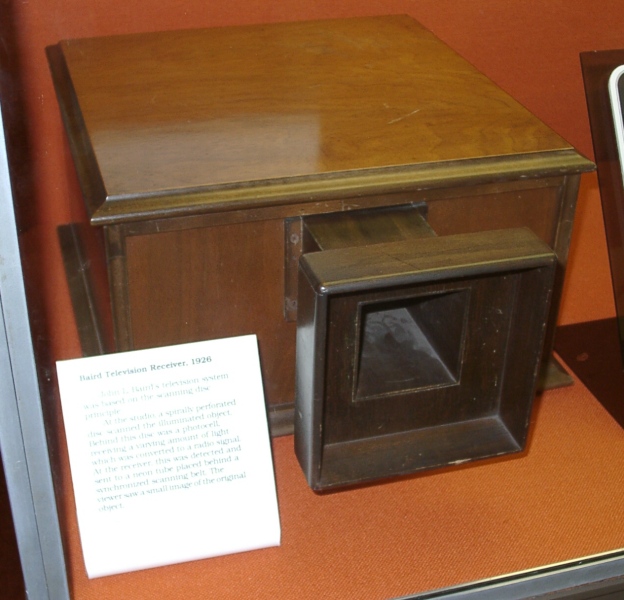The low-profile construction would seem to indicate an unusual scanning mechanism.
James T. Hawes, AA9DT ( jpressel@CORECOMM.net ) writes:
"I'm fairly sure that the scanner is a Hollis Baird design, rather than a John Baird design. As you may know,
Hollis was the genius engineer behind W1XAV / W1XAU in Boston.
"Hollis' scanners employed a scanning belt suspended on a unique "spider" assembly. That's why the
scanner has the low profile that you commented on. The belt mostly fixed the keystoning problem of disc scanners.
The heart of the innovative device is a 1/20-HP motor. The motor shaft faces upward and drives the spider. The
spider forms the belt into a drum shape of large diameter.
"The set reproduced 60-line pictures at 20 frames per second. (For awhile, this was the scanning standard
out east. The RMA even sanctioned 60 / 20 pictures, but allowed exceptions.)
"S.S. Kresge stores sold Hollis Baird's Shortwave & Television sets and kits. Shortwave & Television
later became known as General Television."

Henry Ford Museum, Dearborn Michigan, August 25, 2000
Photgraphed by Wayne E. Bretl
Updated with James Hawes' comments October 4, 2000